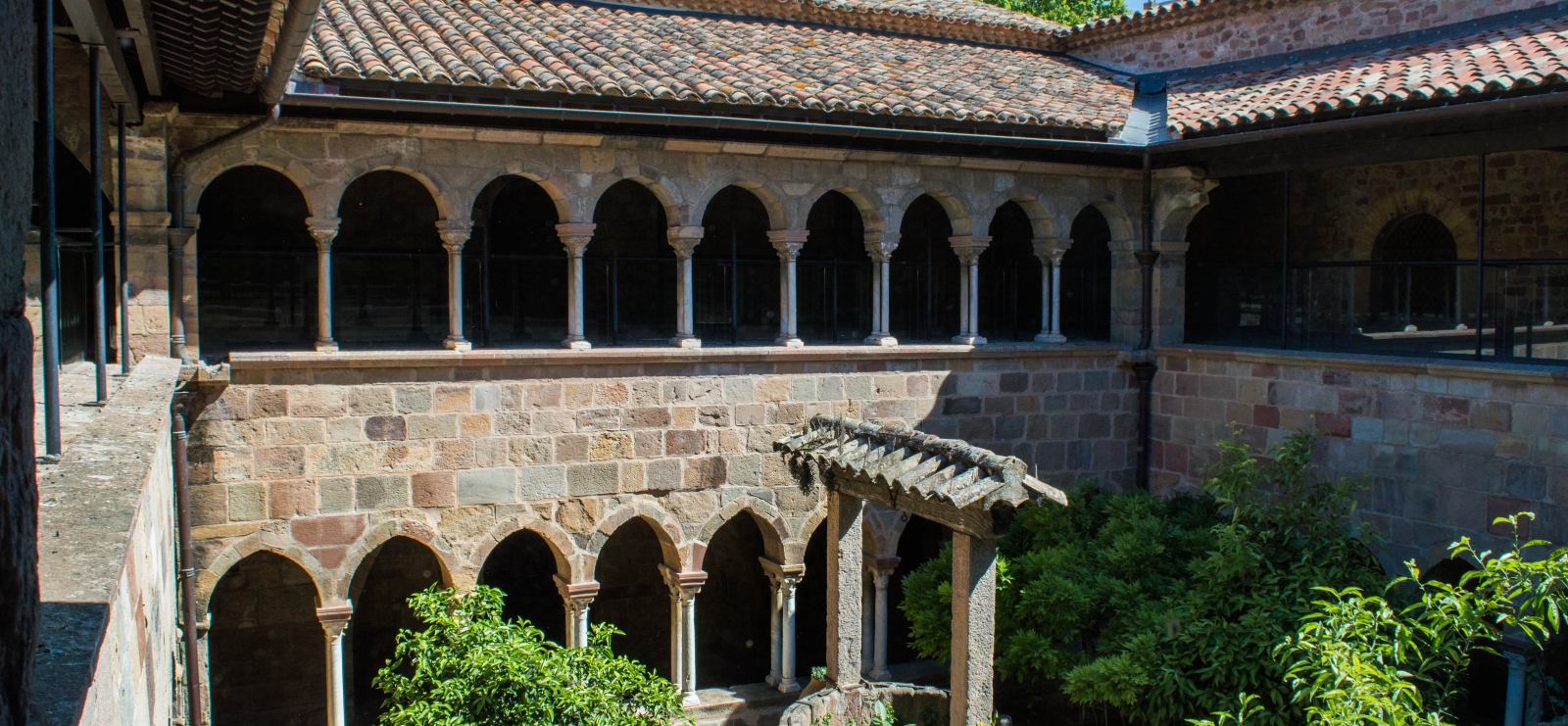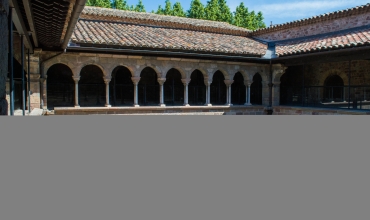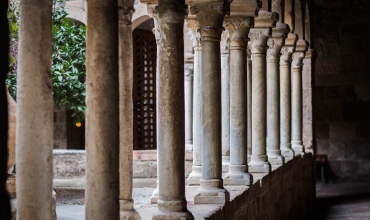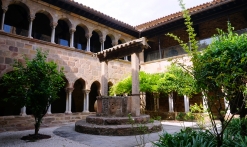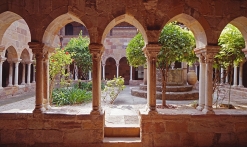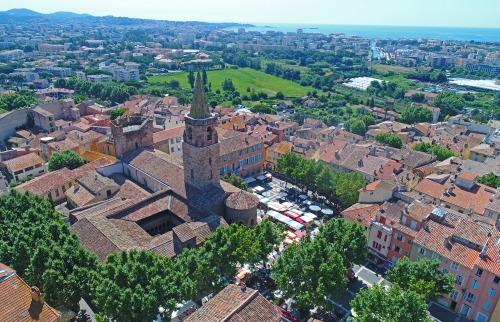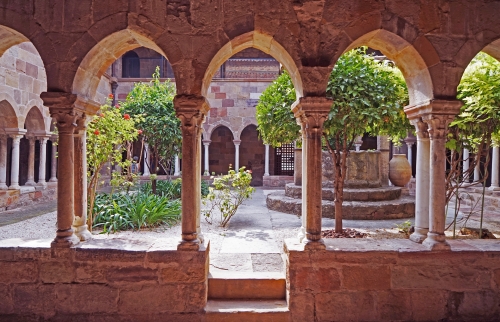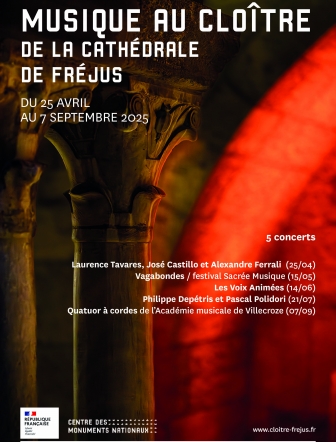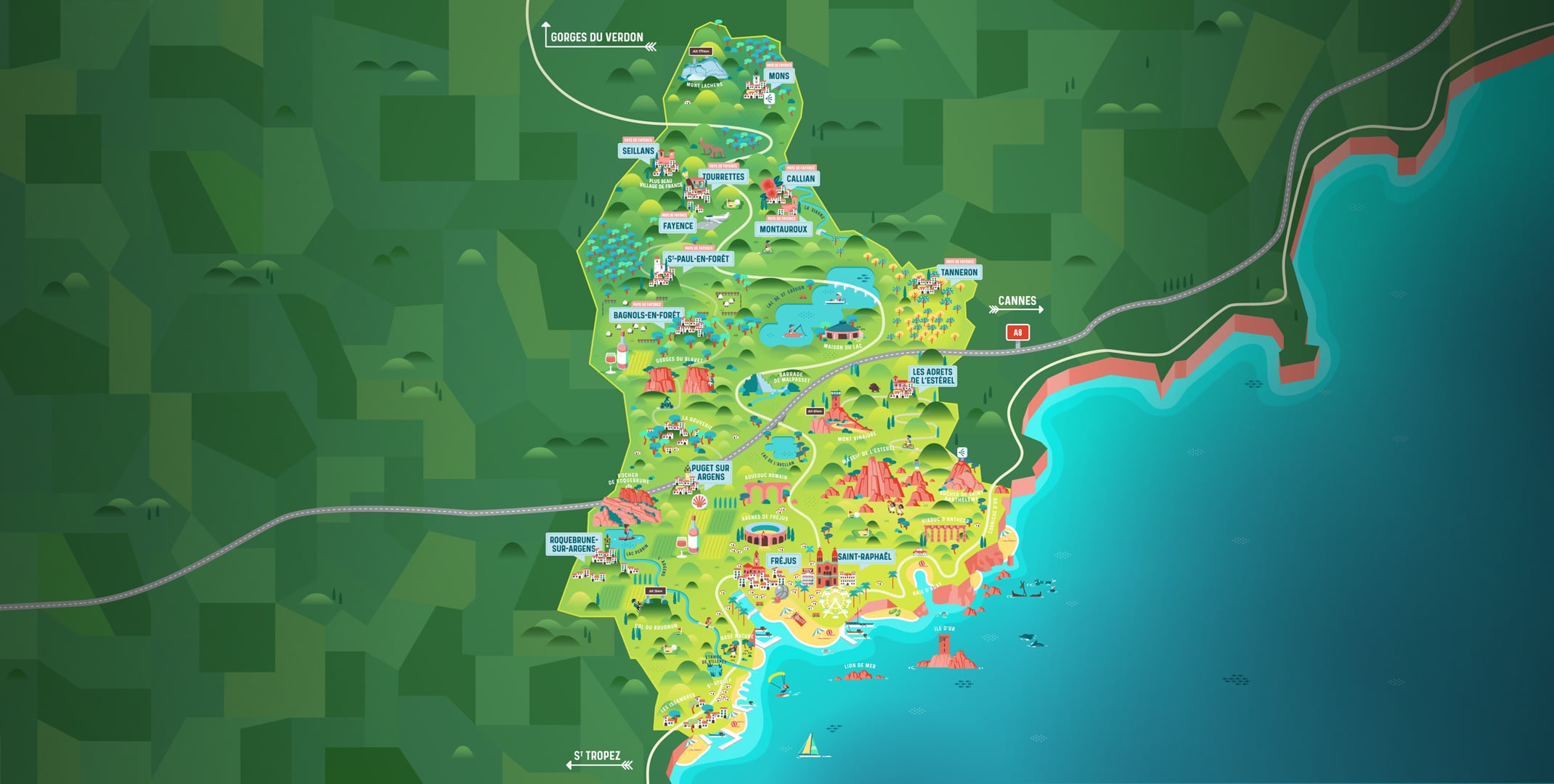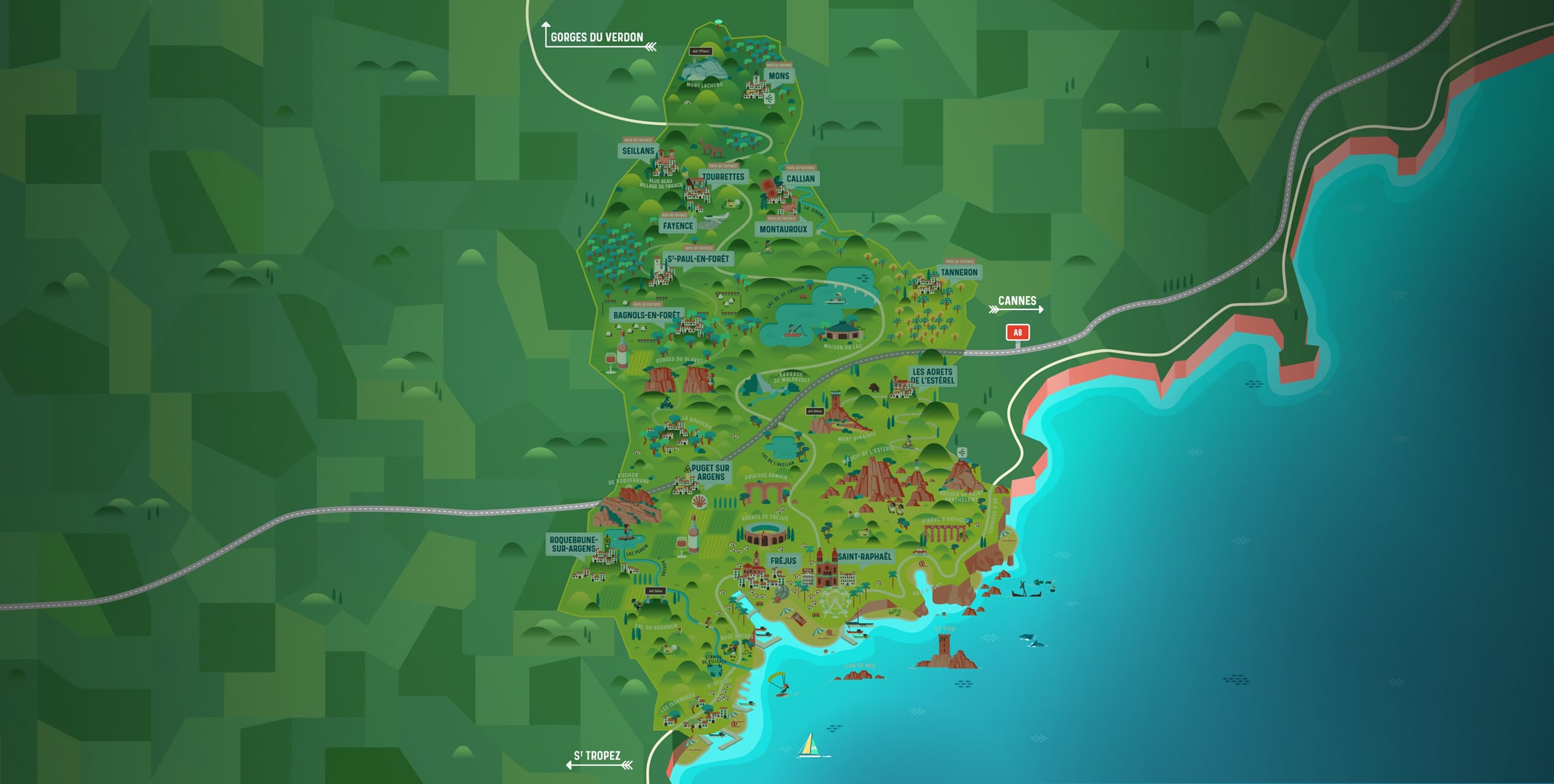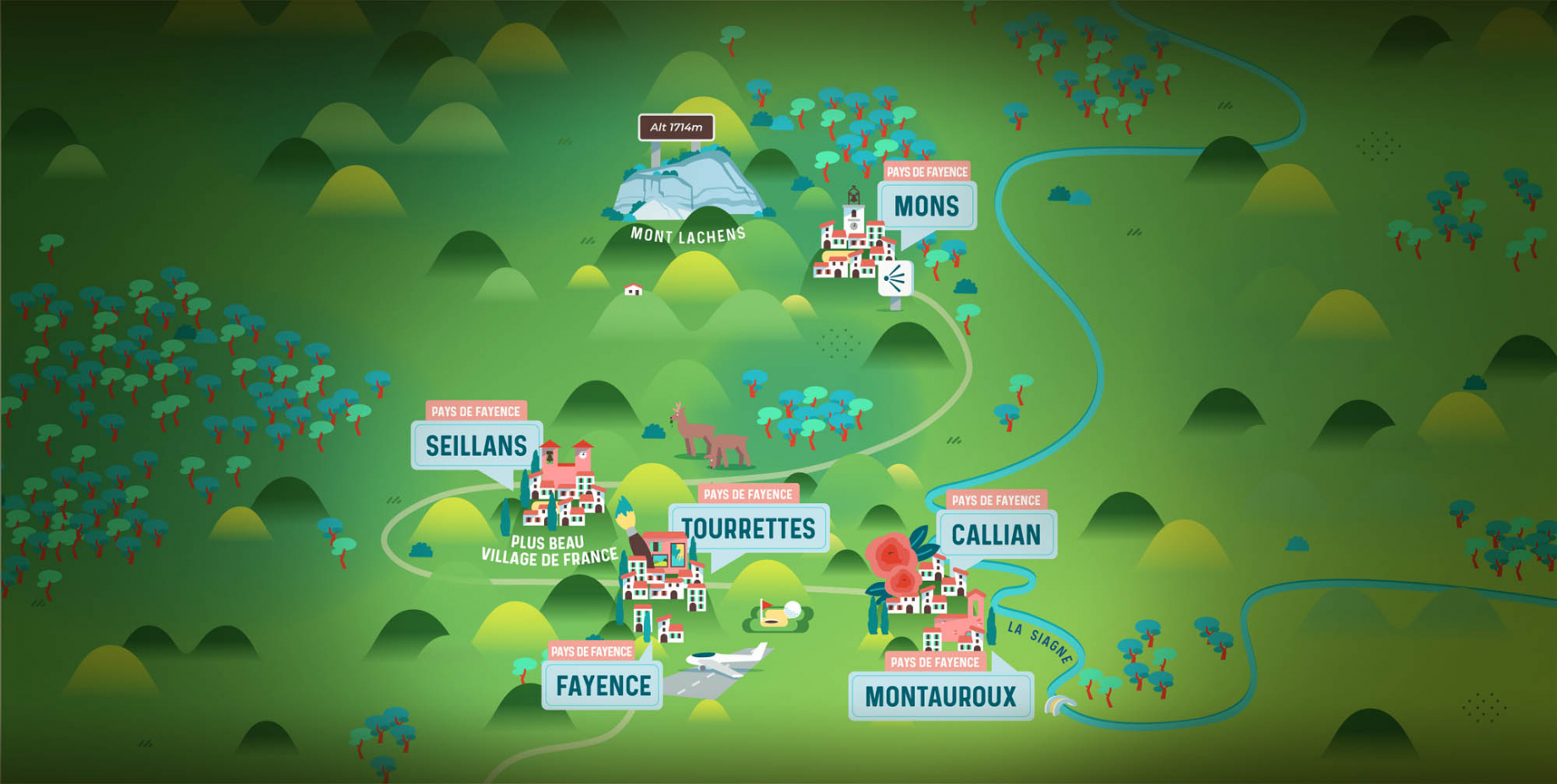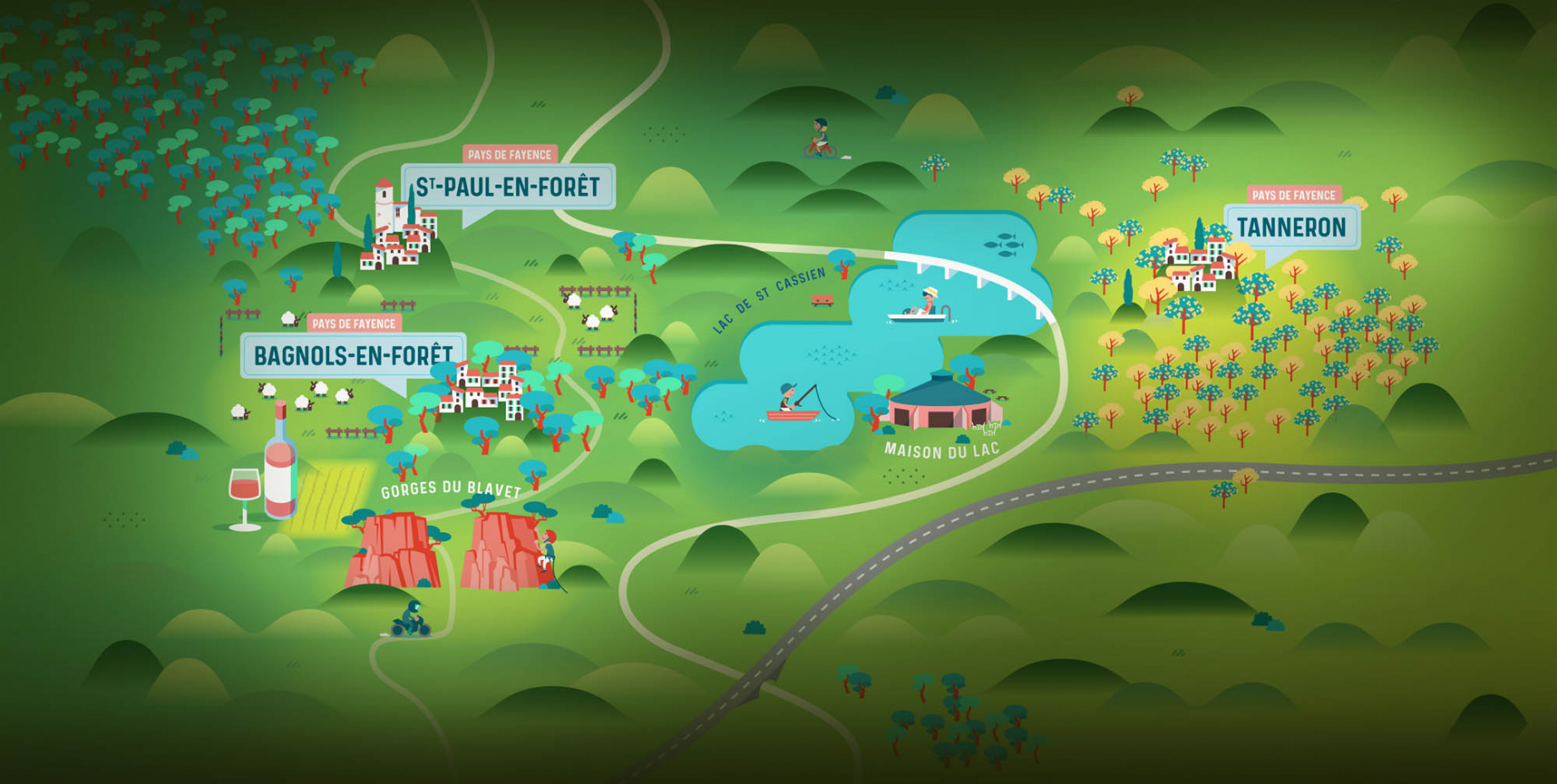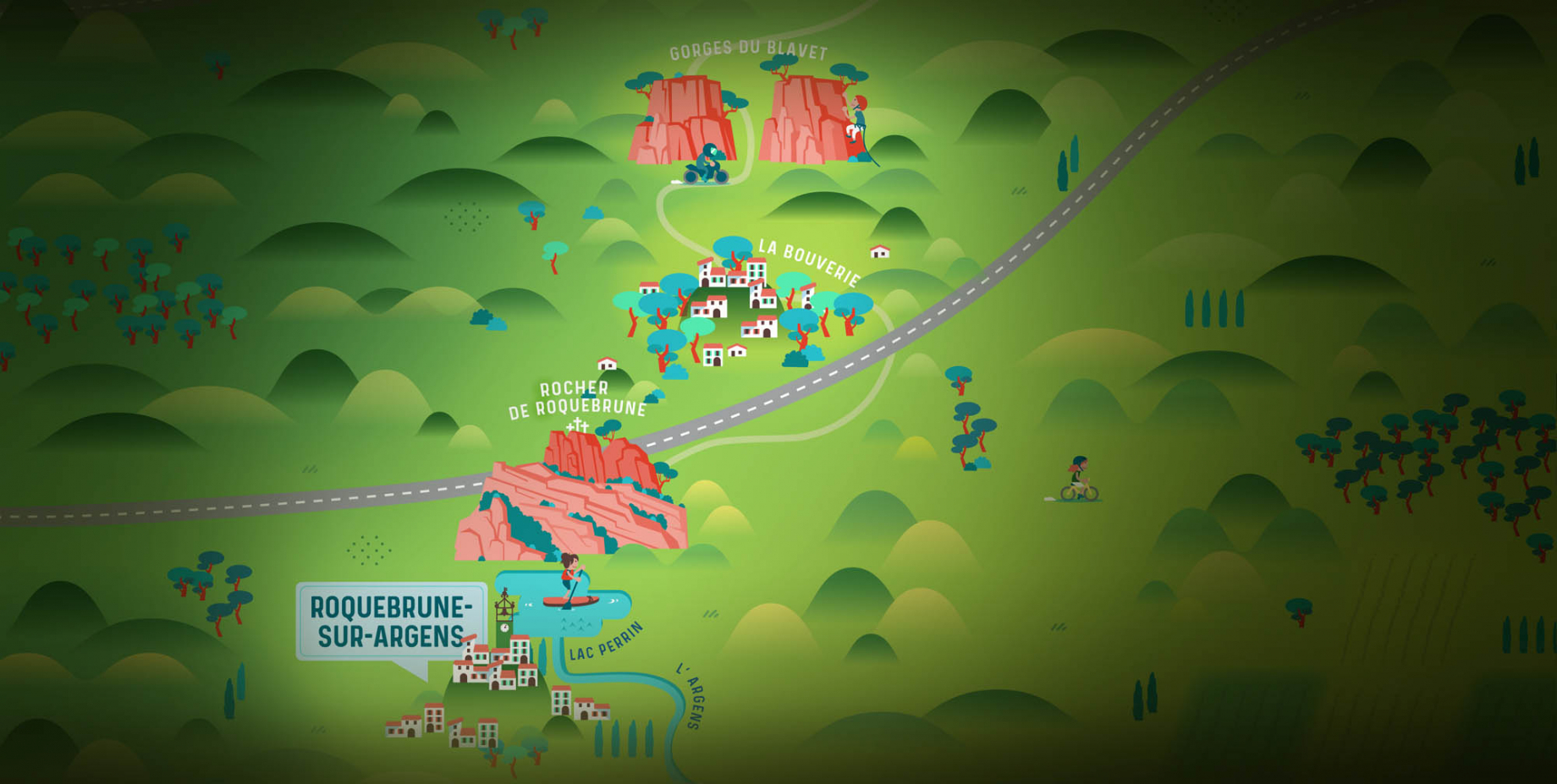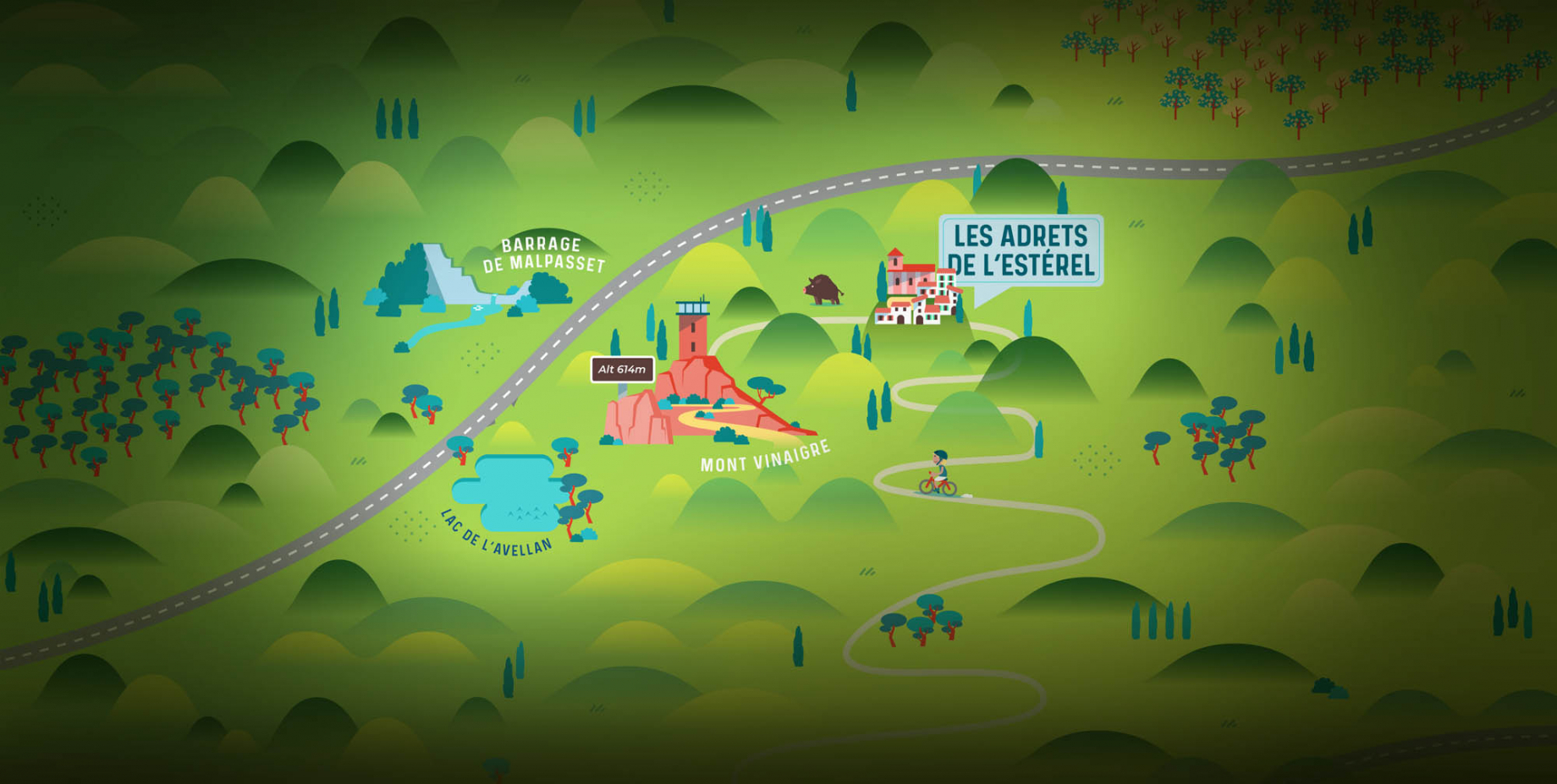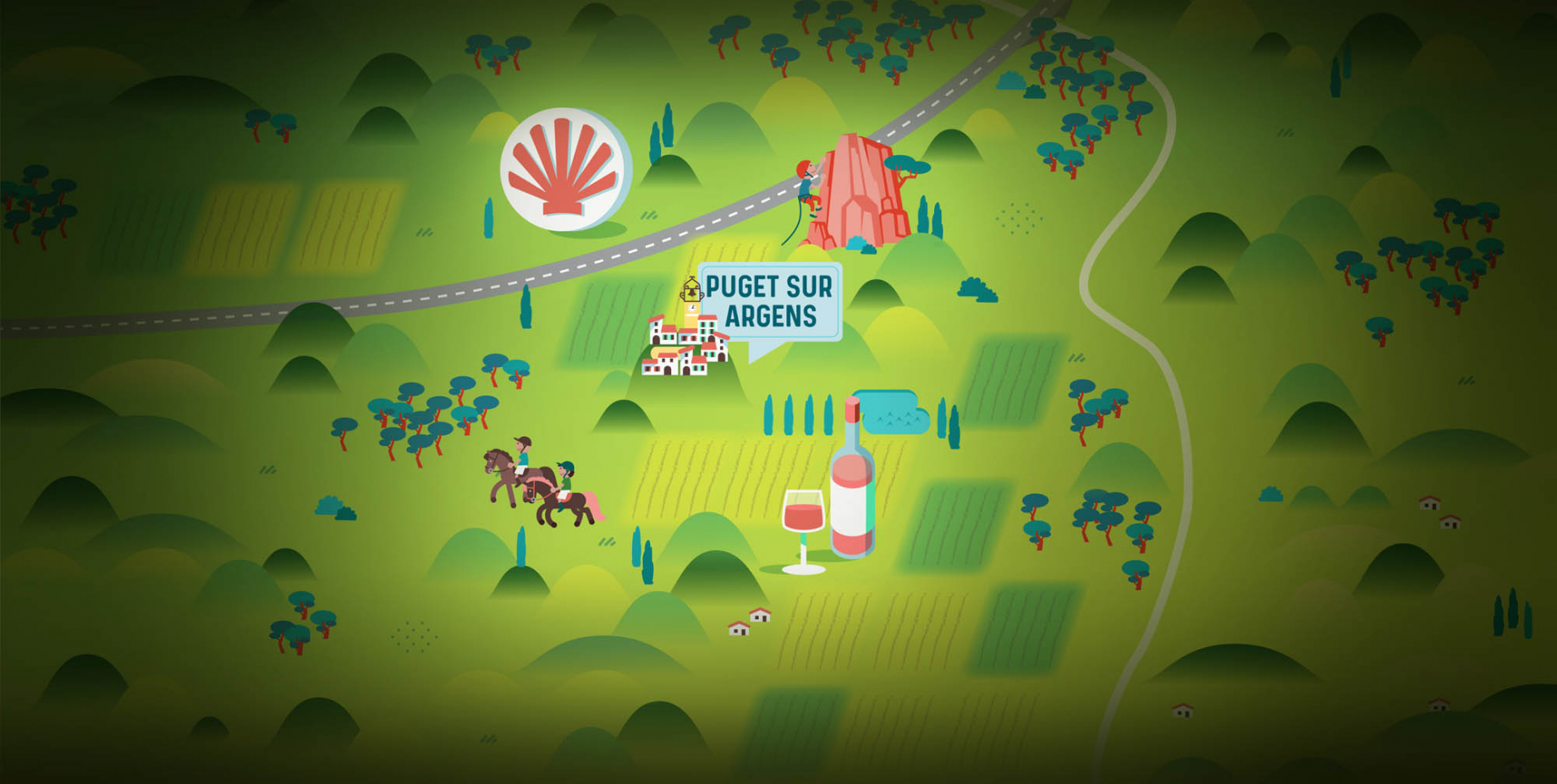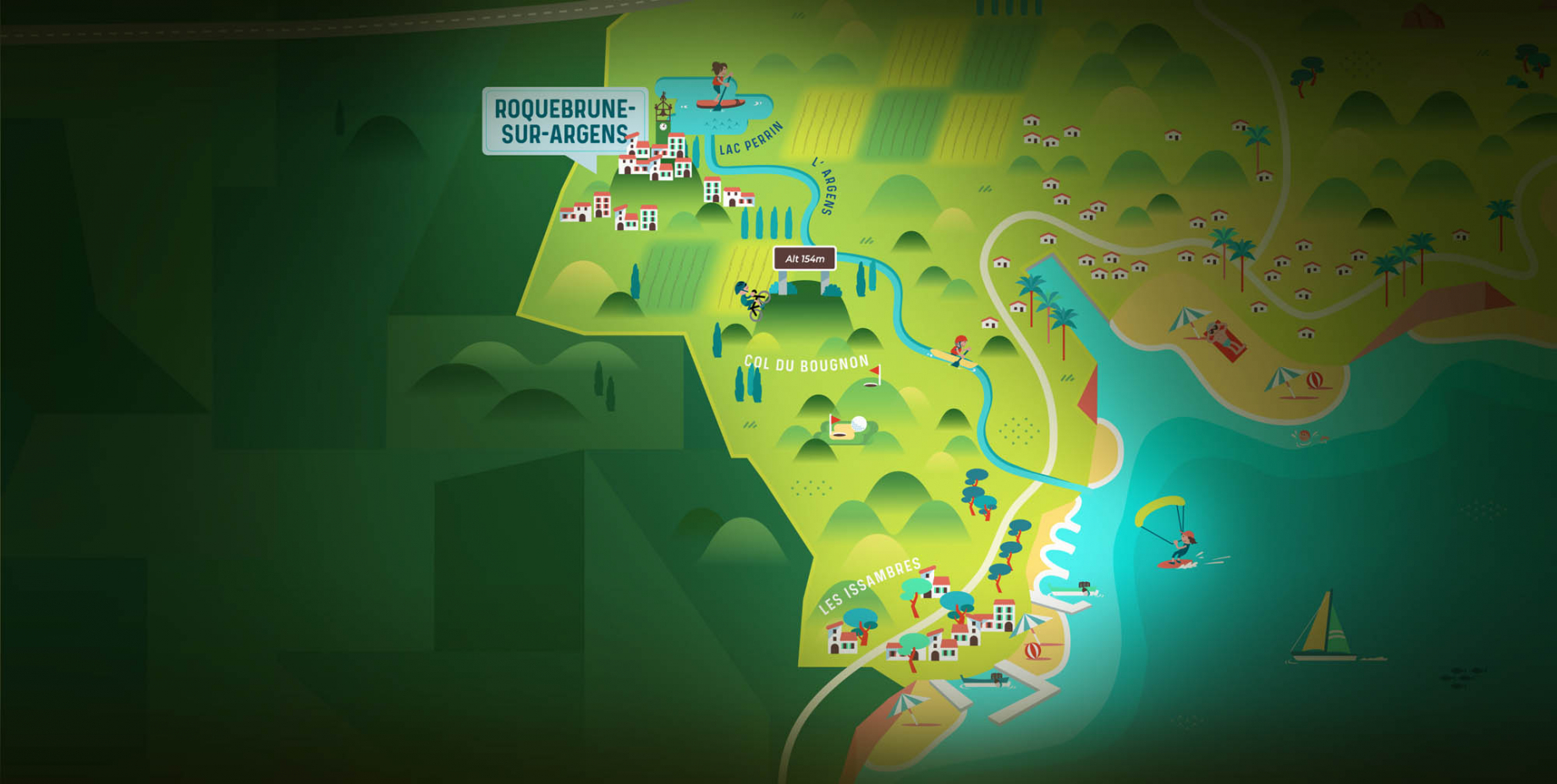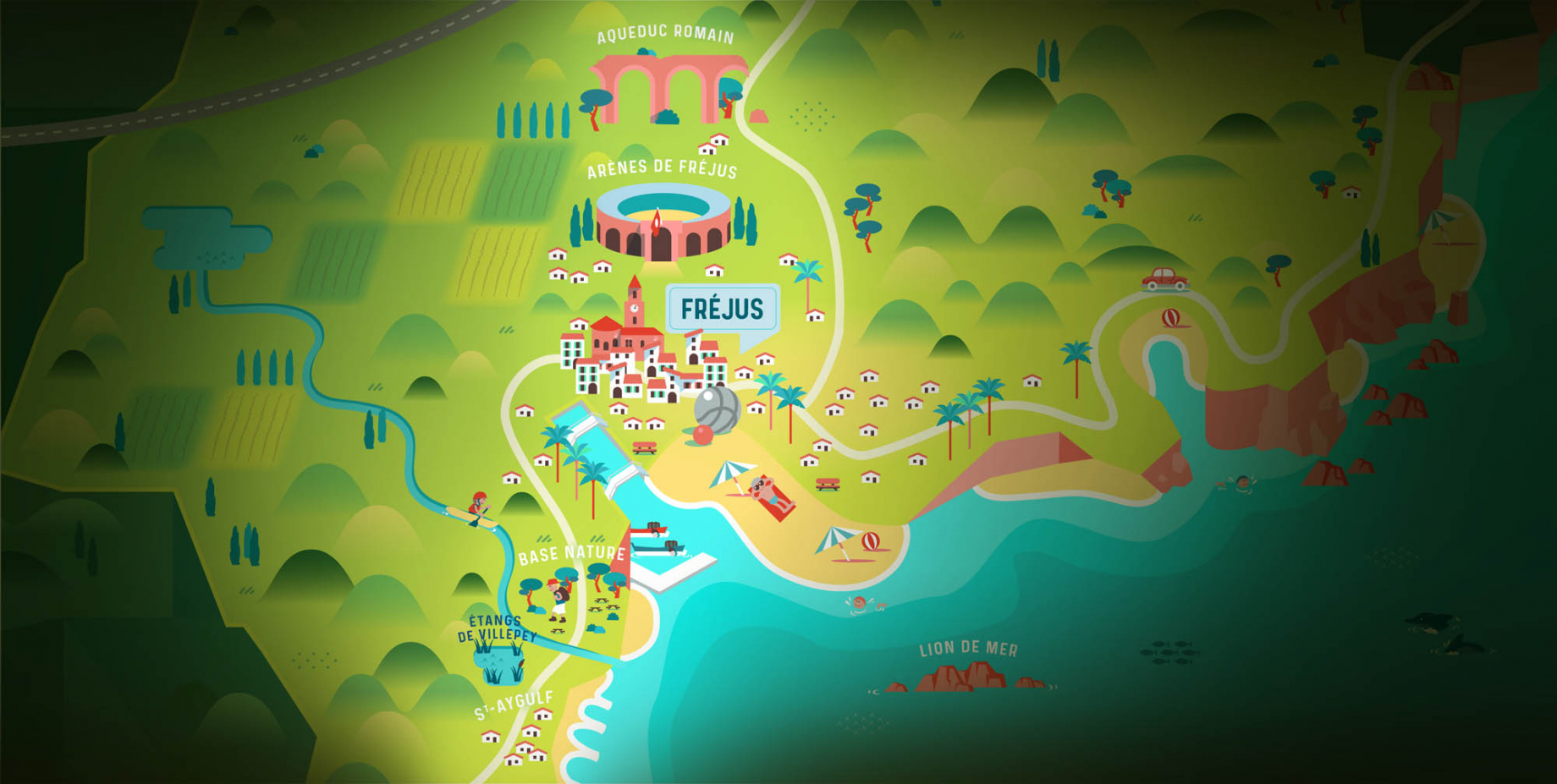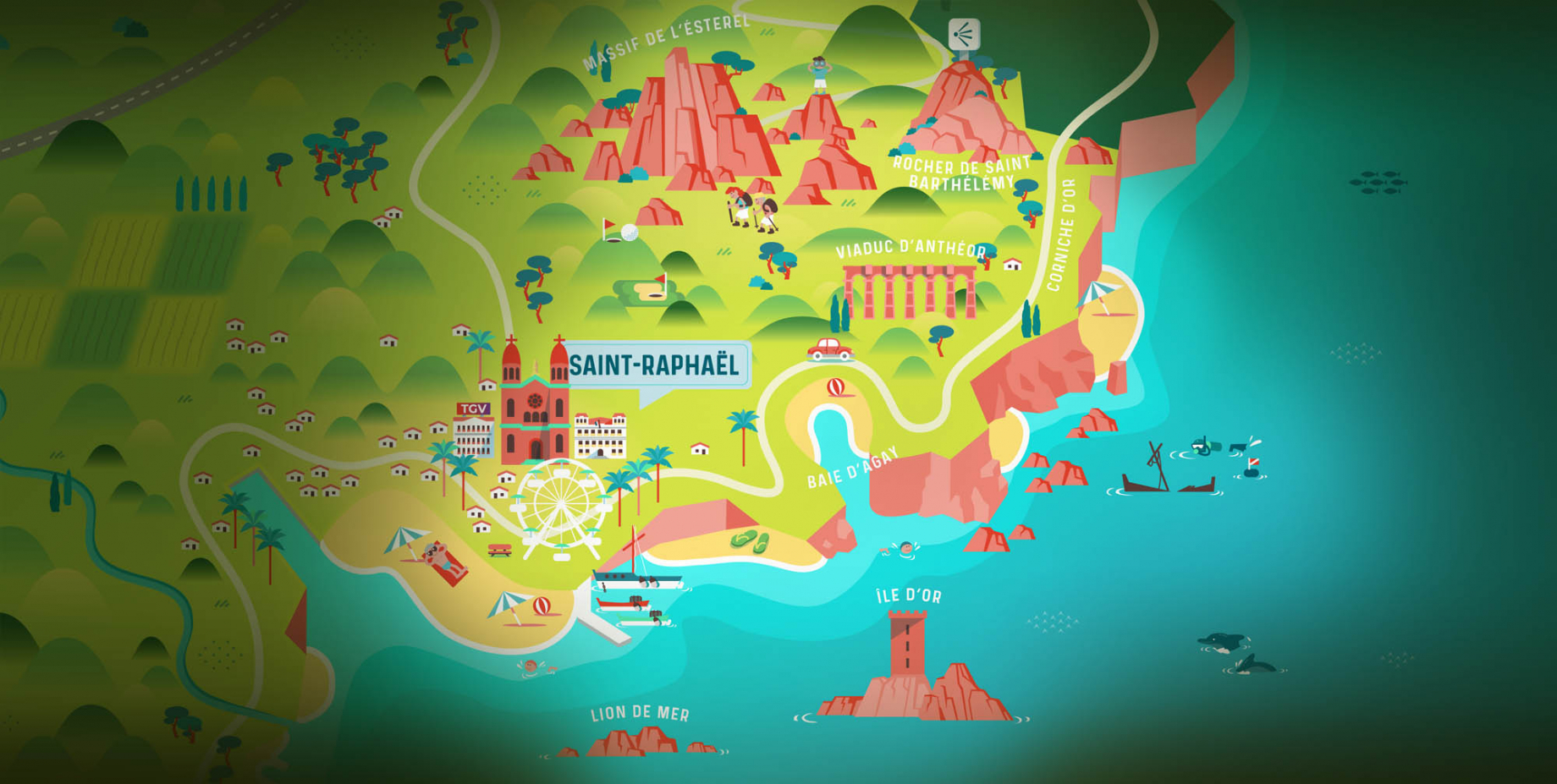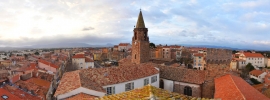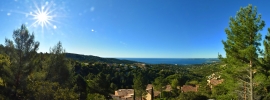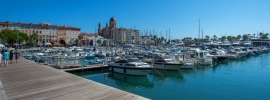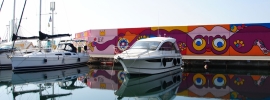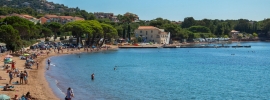Gallery
Description
Until the early 12th century, the Fréjus Chapter, made up of 12 canons and headed by a provost, remained under the close tutelage of the bishop, sharing both income and housing. After a number of disagreements, arbitration separated the assets of the two partners. As a result, the canons chose to move to the north of the cathedral, and it was at this time that the galleries of the Cloister were built. It served as the Cathedral's forecourt. In the eastern wall of the gallery, you can see the trace of the Cathedral's medieval doorway, which is now walled in, as is the oculus above it.
On the first floor, double marble columns support the pointed arches. Columns in Carrara marble, carved from the former podium of the Amphitheatre, or columns in marble from Genoa, a city that maintained close commercial ties with Fréjus. These capitals are a simplified version of the classic Corinthian capital. To the south, a chapter house was built above the cathedral's vestibule, where the canons held their deliberations.
A stone vault covered the galleries. Some traces of anchoring are still visible. Certainly too heavy, it was replaced in the middle of the 14th century (1350) by a framework of larch, appreciated for its plasticity and reputed to be rot-proof, from the Boscodon forest in the Hautes-Alpes. Each of the frame's caissons has been painted. The presence of the fleur-de-lys on one of the caissons cannot predate 1246, when Charles 1er d'Anjou, brother of Saint-Louis, became Count of Provence.1200 painted caissons were created in the 4 galleries of the Cloister. Today, 400 are still visible. The themes are varied: hybrid beings, monsters, saints, busts, scenes of daily life, ecclesiastics... This ensemble is an exceptional example of 14th-century painted decoration, unique in a cloister in France.
The Provost's house was located to the east of the Cloister, on the 1st floor. The western façade features a rusticated wall similar to that of the Cathedral's bell tower and chevet. In the center, a pointed-arched door is sheltered by a stunner, a kind of high opening used to throw stones at approaching enemies.
The upper floor was badly damaged during the French Revolution. Sold as national property, the Cloister was then completely overrun by new buildings, and was classified as a Historic Monument in 1875. Between 1922 and 1931, Jules-Camille Formigé, chief architect for Monuments Historiques, restored the Cloister and the old well, which opens onto an ancient Roman cistern, as well as the double staircase leading to the upper floor.
The restoration of the roofs of the east, west and south galleries gradually became essential to restore the monument's volume, but even more so to ensure the conservation of the painted decoration on the wooden ceiling. The work was carried out in 2008 according to plans drawn up by architect Francesco Flavigny.
Further information
English
French
- Individual visits include : Unguided individual tours available permanentlyGuided individual tours on request
- Groups visits include : Unguided group tours on requestGuided group tours on request
- Services : ShopGuided tours
- Environments : Town locationIn the historic centre

